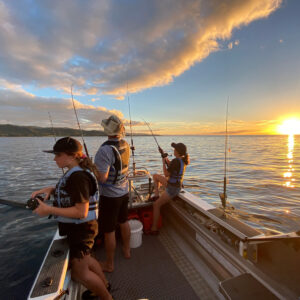There are two outcomes from the recent crayfish management review process; both are bad news for non-commercial interests. Firstly, the Minister followed industry advice to maintain or increase commercial catch limits, and secondly, that under the current regime we are unlikely to see a rebuild of crayfish numbers along our coastline any time soon.
Amongst the 51 submissions sent to the Ministry for Primary Industries in February were heartfelt letters from locals concerned about the depletion of crayfish in their area.
Increasingly people are highlighting the numbers of commercial craypots encircling local headlands and islands where recreational divers used to target crayfish. Stories of success have been replaced by sighs of despair for many local fishers.

If crayfish stocks are this bad now what are they going to be like in five, 10 or 15 years time when our kids are old enough to forage for that special occasion? Five stocks between Northland and Southland were reviewed this year. Commercial catch increases were proposed for two stocks, and decreases for another two stocks.
On March 19 Nathan Guy, the Minister, announced no decreases would apply and the commercial catch limit in the Otago region would be increased by 48%. This decision in particular has created a wave of objections because the concession, enabling the commercial harvest of undersized crayfish, remains in place.
In February the New Zealand Sport Fishing Council submitted it would be unreasonable for the Minister to increase the Otago commercial catch limit while the concession exists.
Originally the concession was established to allow the commercial harvest of immature crayfish for bottling. Times have changed. The bottling is over and we now understand the value to the ecosystem of maintaining a broad range of age classes of all marine creatures, including our precious crayfish.
Nathan Guy is well aware of our objections to the ongoing use of concessions in three stocks, Otago, Gisborne and Southland.
If there are not enough legal sized crayfish in any of these areas to provide for a viable commercial stock then there isn’t a fishery!
LegaSea wants action
LegaSea supports the Council’s submission for a reduction in the exploitation rate in depleted stocks. This means we have to stop taking so many crayfish out of the water. This may require a hefty reduction in commercial catch limits or forgoing quota increases in some areas – an unlikely outcome when any sign of stock recovery is met with commercial catch increases. While the concessions remain and conflict exists the opportunity for finding an agreed solution is slowing drifting away.





